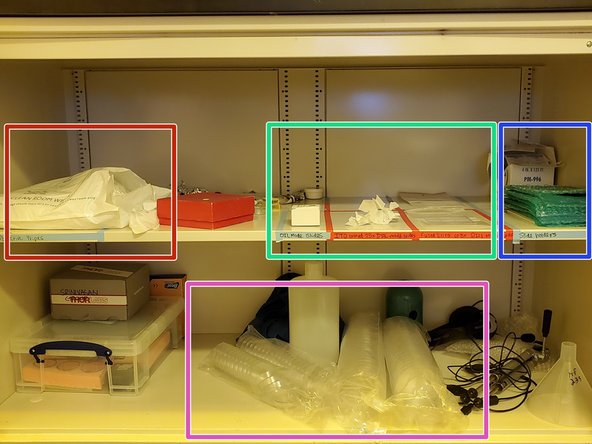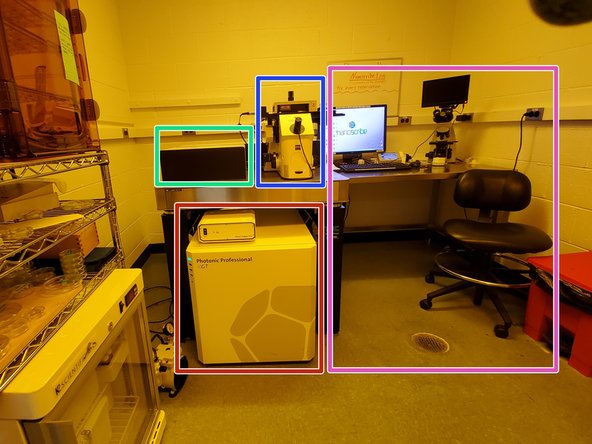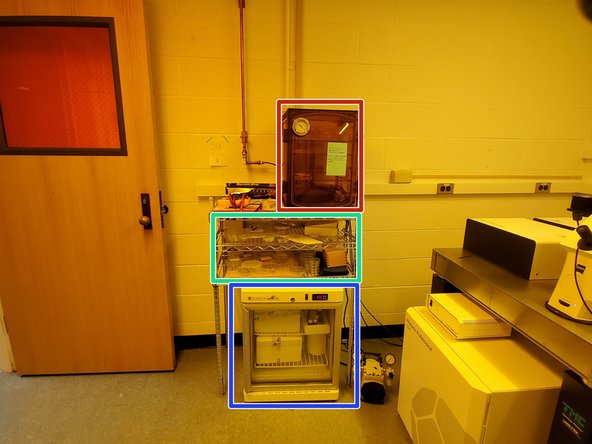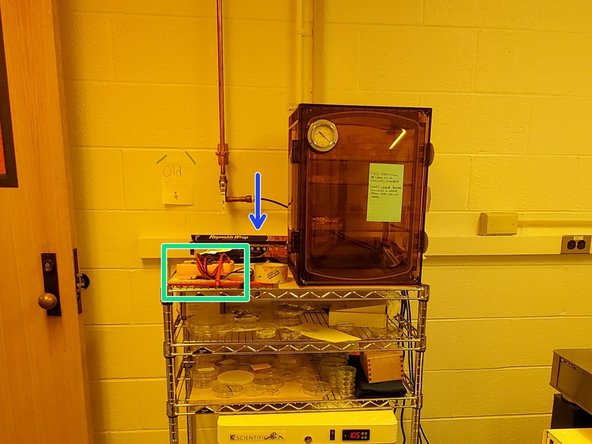Introduction
The Nanoscribe room is located in Glenn L. Martin Hall, within room 0126. The room uses yellow lighting to prevent any unwanted polymerization of photoresist, so the door should remain closed whenever possible to avoid letting ambient light in.
-
-
The fume hood is where you will prepare your slides and develop your prints. Ensure that it is orderly and that all chemical containers are closed.
-
The photoresists are on the left side of the fume hood.
-
The chemicals you will need during the printing process are located along the right side.
-
The left container is for chemical waste from slide preparation (acetone, IPA, and water).
-
The right container is for chemical waste from the print development (PGMEA and IPA).
-
-
-
Nonwoven cloths for general cleaning (NOT objectives) are located above the fume hood on the left.
-
Slide tape and Fixogum are above the fume hood on the right.
-
The hot plate is to the right of the fume hood.
-
-
-
Microfiber cloths must be used when cleaning the microscope objectives.
-
The sample substrates are separated and labeled by type.
-
The sample holders are stored in plastic sleeves on the right side of the cabinet.
-
Various sizes of petri dished are provided on the bottom shelf for transporting your print(s).
-
-
-
The nitrogen tank is located to the left of the fume hood.
-
General solid waste (e.g. cloths, slide tape) can be disposed of in the red bin.
-
Broken slides or failed prints should be discarded in the broken glass bin.
-
-
-
The electronics rack contains the Photonic Professional GT controller, various power supplies, the computer desktop, and the laser control unit.
-
The optics cabinet contains the laser and related optics components.
-
The microscope is located on the right side of the optics table. Aside from the workstation, this is the Nanoscribe component that you will be interacting with the most.
-
The work desk is to the right.
-
-
-
The computer is used to access the NanoWrite printing software.
-
The joystick can be used to control the microscope stage position when the printer is not actively printing.
-
The microscope docking station is primarily used to control the objective turret when loading and unloading objectives.
-
The light microscope is not a component of the printer, but it can be used to view completed prints.
-
-
-
A vacuum chamber is available for those who need it.
-
The racks can be used for temporary print storage, especially during training.
-
The fridge contains spare bottles of photoresist.
-
A set of opened bottles of resist is also refrigerated; if you use one of these resists, you MUST return it to the fridge promptly.
-
Resin performance is optimum if stored at 4-8°C. To use the refrigerated photoresist, place a drop of resist on your cleaned substrate, return the bottle of resist to the fridge, and let resin drop come to room temperature before printing.
-
-
-
The multimeter is located to the left of the vacuum chamber.
-
Aluminum foil is provided for you to use if you need to transport undeveloped prints.
-
Uncured photoresist is susceptible to unwanted polymerization if exposed to regular light, so your undeveloped prints must be covered if they leave the yellow-light environment of the Nanoscribe room.
-
Cancel: I did not complete this guide.
One other person completed this guide.










